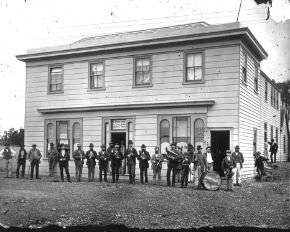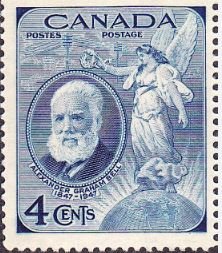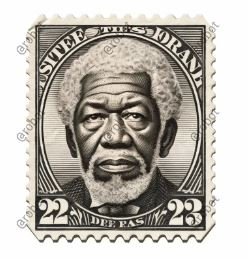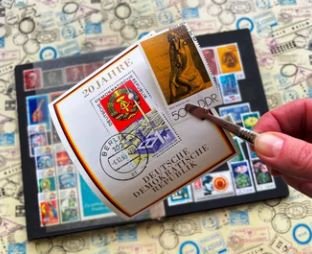Stamps are often seen as mere tools for sending mail, yet they hold a far deeper connection to history than many realize. Exploring the connection between stamps and history reveals a fascinating story of how these small, everyday items have shaped the world in ways both visible and subtle. From commemorating significant events to reflecting political changes, stamps serve as miniature windows into the past. While their importance is frequently overlooked, their influence on history is profound and lasting.

The Early Role of Stamps in History
The history of stamps dates back to the mid-19th century when they were first introduced as a means of simplifying postal services. However, exploring the connection between stamps and history reveals that their role quickly evolved far beyond logistics. Stamps became a tool for governments, empires, and nations to convey messages, assert power, and promote identity. For example, early stamps in England, such as the famous Penny Black, not only served a functional purpose but also marked the rise of the modern postal system, reflecting the progress of an industrialized nation.
Stamps soon became a canvas for depicting historical figures, national landmarks, and monumental achievements. As nations began to use stamps as a form of expression, they told stories of revolution, peace treaties, and cultural triumphs. Exploring the connection between stamps and history means acknowledging how stamps were used to immortalize historical events, turning them into lasting symbols for generations to come.
Stamps as Historical Documents
Beyond their artistic and commemorative value, stamps are also invaluable historical documents. Each stamp is a snapshot of its time, offering insights into the social, political, and economic landscape of a particular period. By exploring the connection between stamps and history, historians can piece together a richer understanding of events that shaped the modern world.
Take, for instance, stamps that depict war or conflict. During the two World Wars, stamps often carried strong political messages, serving as tools of propaganda or morale boosters for citizens. The imagery and language on these stamps provided a snapshot of the wartime mentality and allowed for the dissemination of government narratives. Through this lens, exploring the connection between stamps and history helps us understand the psychology of the time and the role stamps played in shaping public sentiment.
Moreover, stamps have chronicled the transition of empires and nations. The shift in designs, the introduction of new symbols, and the replacement of monarchs and leaders are all captured through the humble stamp. As such, stamps serve as visual time capsules that preserve the political climate of different eras, offering a unique perspective that textbooks may miss.

Cultural Impact and Reflection of Society
Exploring the connection between stamps and history also uncovers their role in reflecting societal values and culture. Stamps have often been used to celebrate important cultural events, such as national holidays, famous artists, and scientific discoveries. Through stamps, nations have celebrated their cultural icons and heroes, fostering national pride and unity.
For example, stamps have been used to honor historical figures like Abraham Lincoln, Mahatma Gandhi, and Albert Einstein, commemorating their contributions to humanity. At the same time, stamps have depicted cultural celebrations like festivals, traditional dances, and landmarks that represent a nation’s cultural heritage. Through these representations, stamps act as cultural ambassadors, showcasing a country’s identity to the world.
However, exploring the connection between stamps and history also reveals instances where stamps have been used to obscure or omit certain parts of history. In times of political tension or conflict, governments have sometimes manipulated stamp designs to support nationalistic ideologies or exclude controversial events. For example, stamps issued by oppressive regimes may intentionally avoid depicting certain historical realities, presenting an idealized image of the nation instead. In this way, stamps serve not only as reflections of the present but also as tools of historical interpretation, for better or worse.
The Underappreciated Power of Stamps in Shaping Global Relations
Though they are often taken for granted, stamps have also played a pivotal role in international relations. Diplomatic exchanges, treaties, and alliances have been marked by the issuance of stamps that symbolize cooperation and friendship between nations. The act of exchanging stamps has historically been a way for countries to build diplomatic ties, often creating lasting connections through the shared appreciation of philately.
Exploring the connection between stamps and history in this context highlights how stamps function as symbolic gestures of peace and unity. Commemorative stamps issued to mark significant milestones, such as the establishment of the United Nations or the end of a war, represent the diplomatic efforts that shaped modern geopolitics. These stamps can be viewed not only as pieces of art but as tangible representations of historical cooperation between nations.

Stamps as a Reflection of Technological Advancements
Another fascinating aspect of exploring the connection between stamps and history is how stamp designs and printing techniques have evolved alongside technological advancements. From the earliest hand-engraved stamps to today’s high-tech, multi-colored prints, the development of stamp production mirrors broader technological progress.
In the 20th century, for example, introducing new printing technologies allowed for the mass production of stamps, enabling the widespread dissemination of national and international messages. As technology advanced, stamps became more sophisticated, featuring intricate designs and security features to prevent counterfeiting. The progression of stamp design and production is a microcosm of the technological transformations that have shaped the modern world.
Conclusion: The Lasting Impact of Stamps on History
Exploring the connection between stamps and history unveils a powerful, yet often underappreciated, impact on how we understand the past. These seemingly small and simple objects have significantly shaped our collective memory, preserved moments in time, and influenced public opinion. Through stamps, we can trace the rise and fall of nations, the evolution of societies, and how individuals have left their mark on history.
While stamps may no longer be as central to modern communication as they once were, their legacy remains significant. They continue to provide a unique, tangible link to our shared history, allowing us to explore the past in ways that no other medium can. By acknowledging and appreciating the powerful yet underappreciated impact of stamps on history, we can gain a deeper understanding of the forces that have shaped the world we live in today.



